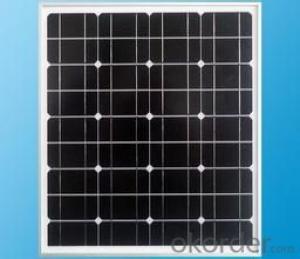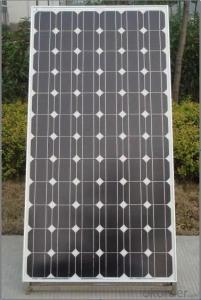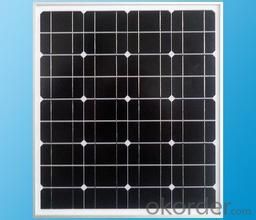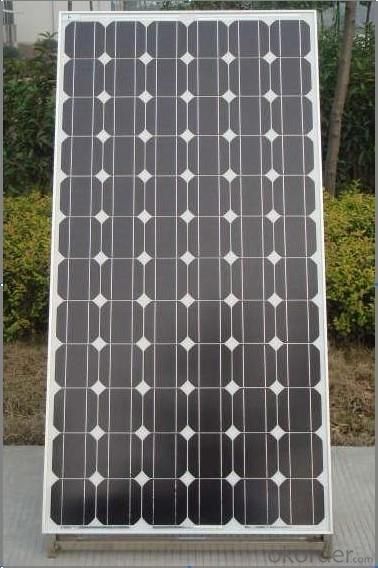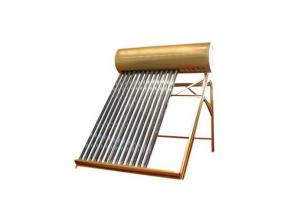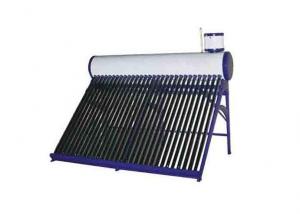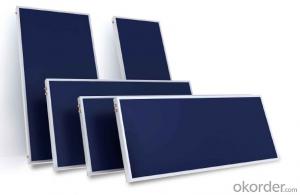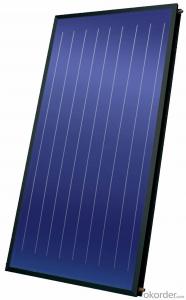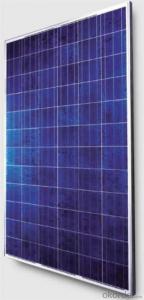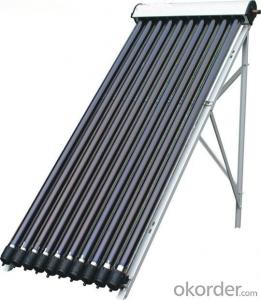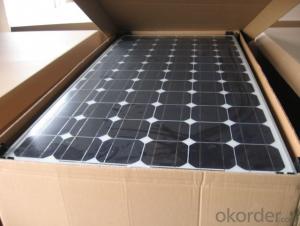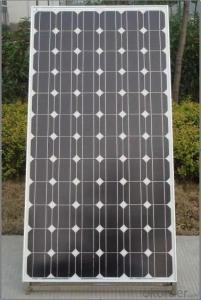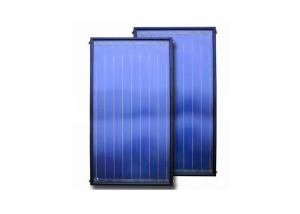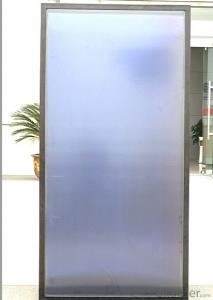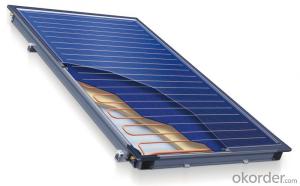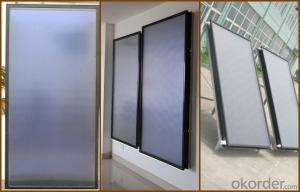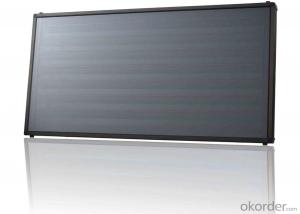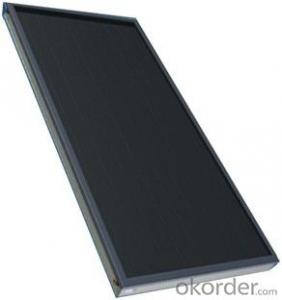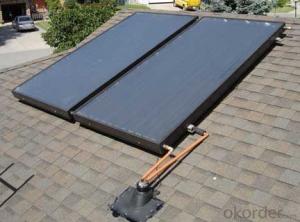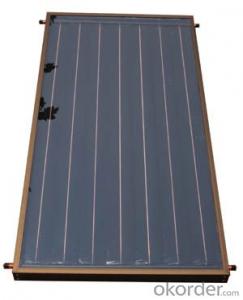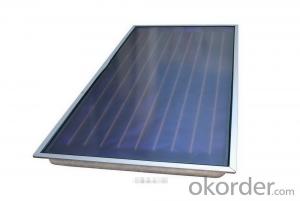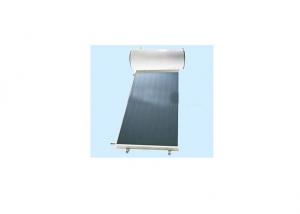Glazed Flat Plate Solar Collectors - Photovoltaic Solar Monocrystalline Series Panels
- Loading Port:
- Tianjin
- Payment Terms:
- TT OR LC
- Min Order Qty:
- 1 pallet
- Supply Capability:
- 100000000 pallet/month
OKorder Service Pledge
OKorder Financial Service
You Might Also Like
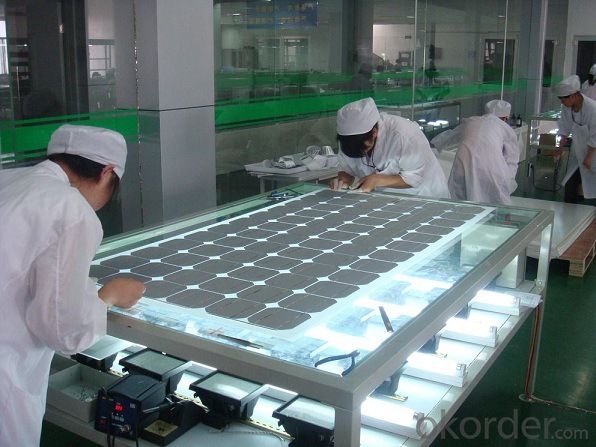
Product Description:
Solar Monocrystalline Series Panels
Introduction of Solar Monocrystalline Series Panels
CNBM Solar photovoltaic (PV) Panel is designed for large electrical power requirements. It is the optimal choice for both on-grid and off-grid power systems. CNBM Solar panel offers high performance of power per square foot of solar array. Monocrystalline silicon(c-Si): often made using the Czochralski process. Single-crystal wafer cells tend to be expensive, and because they are cut from cylindrical ingots, do not completely cover a square solar cell module without a substantial waste of refined silicon. Hence most c-Si panels have uncovered gaps at the four corners of the cells.
Characteristics of Solar Monocrystalline Series Panels
I Solar Cell : High efficiency crystalline solar cell. Even if under the weak light, the solar module can produce maximum power output.
II Tempered glass (toughened glass): Anti-reflecting coating and high transmission rate glass increase the power output and mechanical strength of solar module.
III EVA and TPT: Using high quality EVA and TPT to prevent destroying and water.
IV AI frame: Without screw, corner connection. 6 holes on the frame can be installed easily.
V Junction box: Multi function junction box with water proof.
VI Long lifetime: ≥25 years; Less power decrease
VII Good performance of preventing from atrocious weather such as wind and hails.
VIII Resisting moisture and etching effectively, not effected by geology.
Standard Test Conditions of Solar Monocrystalline Series Panels
The opto-electrical specifications shown below are stabilized values being measured at Standard Test Conditions, Irradiance: 1000W/m2, Spectrum: AM1.5 at 25°C, The info below is subject to manufacturing tolerances. Where appropriate minutes of measurement are available and are used for the dimensioning of the installation.
Advantages of Solar Monocrystalline Series Panels
• CNBM Solar performance guarantees for 25 years
• 12 years guarantee for workmanship
• Timeliness of delivery
CNBM International Corporation's products including Monocrystalline Solar Panel, Polycrystalline Solar Panel have received and enjoyed famous reputation in many countries and regions in the world .As a solar panel supplier in China, we strive to provide our customers with excellent service, superior products and unmatched value.
Characteristics of Solar Monocrystalline Series Panels
Max Power Voltage Vmp (V) | 18.4V | 17.6V |
Max Power Current Imp (A) | 6.52A | 7.39A |
Open Circuit Voltage Voc (V) | 23.0V | 22.2V |
Short Circuit Current Isc (A) | 6.97A | 7.90A |
Max Power Pm (W) | 120W | 130W |
Temperature Coefficient of Cells
NOCT | 47℃±2℃ |
Temperature Coefficients of Isc (%/℃) | 0.064 |
Temperature Coefficients of Voc (%/℃) | -0.33 |
Temperature Coefficients of Pmp (%/℃) | -0.45 |
Mechanical Data Solar Monocrystalline Series
Power | 120W/130W |
Dimension | 1190/1470×670×30mm |
Weight | 9.5kg/11.7kg |
Tolerance | ±3% |
The dimension of the modules can be changed according to the demand of clients
Limits
Operating Temperature | –40 °C to +85°C |
Storage Temperature | –40 °C to +85°C |
Max System Voltage | 700V |
Guarantee Solar Monocrystalline Series Panels
Products Guarantee | 10 yrs free from defects in materials and workmanship |
Performance Guarantee | No less than 90% within 10yrs and no less than 80% within 25yrs |
Certificates | IEC, ISO, TUV, CE |

FAQ
We have organized several common questions for our clients,may help you sincerely:
1. What’s price per watt?
A: It’s depends on the quantity, delivery date and payment terms of the order. We can talk further about the detail price issue. Our products is high quality with lower price level.
2. Can you tell me the parameter of your solar panels?
We have different series of cells with different power output, both from c-si to a-si. Please take our specification sheet for your reference.
3. How do you pack your products?
We have rich experience on how to pack the panels to make sure the safety on shipment when it arrives at the destination.
4. Can you do OEM for us?
Yes, we can.
5. How long can we receive the product after purchase?
In the purchase of product within three working days, We will arrange the factory delivery as soon as possible. The perfect time of receiving is related to the state and position of customers. Commonly 7 to 10 working days can be served.
- Q: Do solar collectors require direct sunlight to operate?
- Yes, solar collectors require direct sunlight to operate effectively. While they can still generate some energy under partially cloudy conditions, direct sunlight maximizes their efficiency and output.
- Q: What is the impact of temperature variations on the performance of solar collectors?
- Temperature variations can have a significant impact on the performance of solar collectors. Higher temperatures can increase the efficiency of solar collectors, as they enhance the conversion of sunlight into heat or electricity. However, excessive heat can also lead to a decrease in performance, as it can cause overheating and reduce the efficiency of the system. On the other hand, colder temperatures can decrease the overall performance of solar collectors, as it reduces the amount of available sunlight and can affect the fluid circulation within the system. Therefore, maintaining optimal temperature conditions is crucial for maximizing the performance and efficiency of solar collectors.
- Q: How do solar collectors impact property values?
- Solar collectors can have a positive impact on property values. They are seen as a valuable and sustainable addition to homes, which can lead to increased interest from buyers and potentially higher selling prices. Additionally, solar collectors can help reduce energy costs, making the property more attractive and financially beneficial for potential buyers.
- Q: What is a trough solar collector?
- Due to the different expansion coefficient of glass and metal seal, this structure of the absorber is currently high cost, short life, reliability is affected.
- Q: Can solar collectors be used for heating warehouses?
- Yes, solar collectors can be used for heating warehouses. Solar thermal systems, such as flat plate or evacuated tube collectors, can capture and convert solar energy into heat. This heat can then be used for space heating in warehouses, providing a sustainable and cost-effective alternative to traditional heating methods.
- Q: How do solar collectors perform in cloudy conditions?
- Solar collectors perform less efficiently in cloudy conditions compared to sunny conditions. Cloud cover reduces the amount of direct sunlight reaching the solar collectors, which in turn decreases the amount of energy that can be harvested from the sun. However, solar collectors can still generate some amount of electricity or heat even in cloudy conditions. The extent to which they can perform depends on the thickness and type of clouds, as well as the design and efficiency of the solar collectors themselves. Some advanced solar collector technologies, such as those with tracking systems or concentrators, may be better equipped to capture diffuse sunlight and maximize energy production in cloudy conditions. Additionally, certain types of solar collectors, such as those with evacuated tubes or parabolic troughs, can still perform reasonably well even with limited direct sunlight. Overall, while solar collectors may not operate at their full capacity in cloudy conditions, they can still contribute to energy generation and provide a valuable renewable energy source.
- Q: Can solar collectors be integrated into building designs?
- Yes, solar collectors can be integrated into building designs. They can be seamlessly incorporated into the architecture of buildings, such as rooftops, facades, or windows, allowing them to generate renewable energy while blending in with the overall aesthetics of the structure. This integration helps optimize energy efficiency and reduces the reliance on traditional energy sources, making buildings more sustainable and environmentally friendly.
- Q: Can solar collectors be used for generating electricity on oil rigs?
- Solar collectors have the ability to generate electricity on oil rigs. These devices, also referred to as solar panels, convert sunlight into electrical energy by utilizing the photovoltaic effect. By harnessing the ample sunlight available, they can be installed on oil rigs to produce clean and renewable energy. This electricity can then be utilized for a variety of purposes on the rig, including powering lighting, equipment, and communication systems. Incorporating solar collectors into oil rigs lessens the dependence on conventional fossil fuels and contributes to a more sustainable and environmentally-friendly energy source. Moreover, solar panels aid in diminishing the overall carbon footprint of the oil rig by offsetting a portion of energy consumption and decreasing greenhouse gas emissions.
- Q: Can solar collectors generate electricity?
- Yes, solar collectors can generate electricity. Solar collectors, such as photovoltaic panels, use sunlight to produce electricity through the photovoltaic effect.
- Q: Can solar collectors be used for generating electricity on lakes?
- Yes, solar collectors can be used for generating electricity on lakes. Floating solar panels, also known as floating photovoltaic (FPV) systems, are designed to be installed on bodies of water such as lakes. These systems consist of solar panels that are placed on floating structures, often made of buoyant materials like plastic or aluminum. There are several advantages to using solar collectors on lakes. Firstly, lakes often have large surface areas that receive ample sunlight, making them ideal locations for solar power generation. Additionally, floating solar panels can help to minimize land usage and maximize energy production by utilizing the available water surface. Furthermore, the natural cooling effect of water can enhance the efficiency of solar panels, as they perform better at lower temperatures. Water also acts as a natural cleaning agent, reducing the need for maintenance and ensuring optimal performance. Additionally, floating solar panels can help reduce water evaporation from lakes, which is particularly beneficial in arid regions. However, it is important to consider the specific conditions of the lake before installing solar collectors. Factors such as water depth, water quality, and environmental impact assessments need to be taken into account. Adequate anchoring systems must also be used to ensure the stability of the floating structures in varying weather conditions. Overall, solar collectors can be effectively used for generating electricity on lakes, providing a sustainable and renewable energy solution with multiple benefits.
Send your message to us
Glazed Flat Plate Solar Collectors - Photovoltaic Solar Monocrystalline Series Panels
- Loading Port:
- Tianjin
- Payment Terms:
- TT OR LC
- Min Order Qty:
- 1 pallet
- Supply Capability:
- 100000000 pallet/month
OKorder Service Pledge
OKorder Financial Service
Similar products
Hot products
Hot Searches
Related keywords
